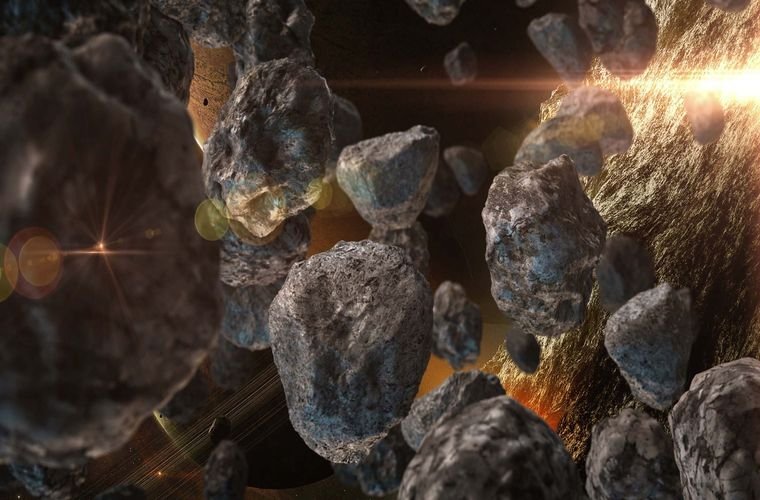For many scientists studying the origins of the galaxy, meteorites provide important information about how planets and other celestial bodies may have formed. In order for a meteorite to hit Earth’s surface, it goes through a violent process of being heated as it moves against our atmosphere on re-entry. This can cause damage to meteorites and limit how much of these space rocks are left for scientists can analyze.
In light of this, a new study recently examined the re-entry process in order to see just how much damage can be caused to meteorites by analyzing what portions of a particular asteroid made it all the way to Earth’s surface.
Background: Know Your Space Rock
When talking about these falling space rocks, it’s important to understand their classifications. A meteoroid is a small space object, ranging from the size of a dust grain to small asteroids. A meteoroid turns into a meteor when it enters Earth’s atmosphere and burns up into a bright streak of light. This transition also explains the origin of “shooting stars.” If the meteor does not get burned up in the atmosphere, it hits the Earth and is classified as a meteorite. It is the transition from meteor to meteorite that the researchers at SETI were interested in.
Analysis: Looking at Landing Spots
Research for this study began back in 2008 when researchers at the University of Khartoum recovered over 600 meteorites that had landed in the Nubian Desert of Sudan. According to professor Muawia Shaddad of the University of Khartoum, “For each meteorite, we recorded the find location.” The meteorites collected ranged in size from a pebble to a fist-sized space rock.
In analyzing the geographic data, the researchers found that the larger meteorites were more spread out than the smaller ones. This pattern seemed to be due to the burning up process in the Earth’s atmosphere.
“The rock collides with the atmosphere, which heats up and puts pressure on the front. The front melts and breaks pieces off,” explained lead researcher Peter Jenniskens, a meteor expert with the SETI Institute. In an interview with the Debrief, Jenniskens said, “Most of those pieces are swept into the near vacuum behind the rock. When much of the rock is gone, the final piece reaches a point where it can’t handle the pressure anymore and suddenly breaks. The pieces from that final collapse repel each other’s shockwaves and are scattered with relatively high velocity in all directions.” This process is what created the pattern the researchers saw, with bigger rocks falling farther away.
This pattern not only tells scientists which rocks made it through re-entry but also where to find them. “The larger pieces end up scattering over a wider area on the ground,” Jenniskens added. “That means, if you search over a wider area perpendicular to the asteroid’s path than you do for smaller pieces, you can potentially find larger pieces. And that helps in recovering the full diversity of materials in a given fall.” This pattern also can help scientists when it comes to safety guidelines in the circumstance of a large and dangerous asteroid.
Outlook: Dangerous Meteorite
Though they are not common, there have been asteroids that have caused significant damage once they make their way to Earth, sometimes despite never actually making impact. “A 50-meter sized asteroid flattened a forest and likely led to the death of at least three people in the Tunguska area of Siberia in 1908,” Jenniskens said. “Also, a 20-meter-sized asteroid created a damaging shockwave in February 2013 over the Russian city of Chelyabinsk. Over 1600 people went with cuts and bruises to a hospital for medical treatment.”
Knowing the debris pattern for an asteroid can help government officials plan ahead to minimize large losses of life if an incoming asteroid is spotted. Jenniskens and his colleagues hope their research will not only answer some of these lingering questions about meteorites, but perhaps provide a basis for future research that can help space scientists plan and prepare for the approach of potentially deadly space objects.
Kenna Hughes-Castleberry is a staff writer at the Debrief and the Science Communicator at JILA (a partnership between the University of Colorado Boulder and NIST). Her writing beats include deep tech, the metaverse, and quantum technology. You can find more of her work at her website: https://kennacastleberry.com/

